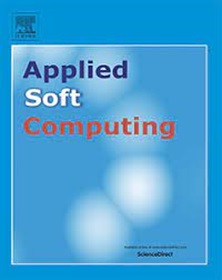Prediction of corporate default risk considering ESG performance and unbalanced samples
IF 7.2
1区 计算机科学
Q1 COMPUTER SCIENCE, ARTIFICIAL INTELLIGENCE
引用次数: 0
Abstract
This paper constructs a corporate default risk prediction model taking ESG scores into account in an unbalanced sample state. Four indicators are introduced—the ESG composite score, environmental dimension score, social dimension score, and governance dimension score—to assess an enterprise's capacity for sustainable development as well as its level of greenness and low carbon emissions. These indicators improve and supplement the current corporate default prediction indicator system. The Focal Loss function and the cost-sensitive decision threshold are used to improve the traditional Stacking model at the algorithmic aspect. The CS-FL-Stacking model is then built to address the problem of sample class imbalance. After conducting an empirical analysis with data from 3006 Chinese A-share listed companies during 2021–2023, the following conclusions are drawn: (1) The inclusion of ESG indicators can somewhat enhance the model's prediction ability and reduce the misclassification loss. (2) The CS-FL-Stacking model generally outperforms the benchmark model in terms of accuracy and other indicators. It also considerably improves its capacity to identify minority samples, which can effectively address the problem of unbalanced sample classification. (3) Relevant recommendations are provided for the improvement of the CS-FL-Stacking model and the application of ESG indicators in corporate risk management in light of the analysis just mentioned.
求助全文
约1分钟内获得全文
求助全文
来源期刊

Applied Soft Computing
工程技术-计算机:跨学科应用
CiteScore
15.80
自引率
6.90%
发文量
874
审稿时长
10.9 months
期刊介绍:
Applied Soft Computing is an international journal promoting an integrated view of soft computing to solve real life problems.The focus is to publish the highest quality research in application and convergence of the areas of Fuzzy Logic, Neural Networks, Evolutionary Computing, Rough Sets and other similar techniques to address real world complexities.
Applied Soft Computing is a rolling publication: articles are published as soon as the editor-in-chief has accepted them. Therefore, the web site will continuously be updated with new articles and the publication time will be short.
 求助内容:
求助内容: 应助结果提醒方式:
应助结果提醒方式:


